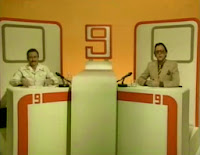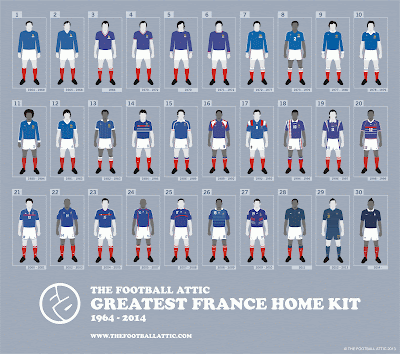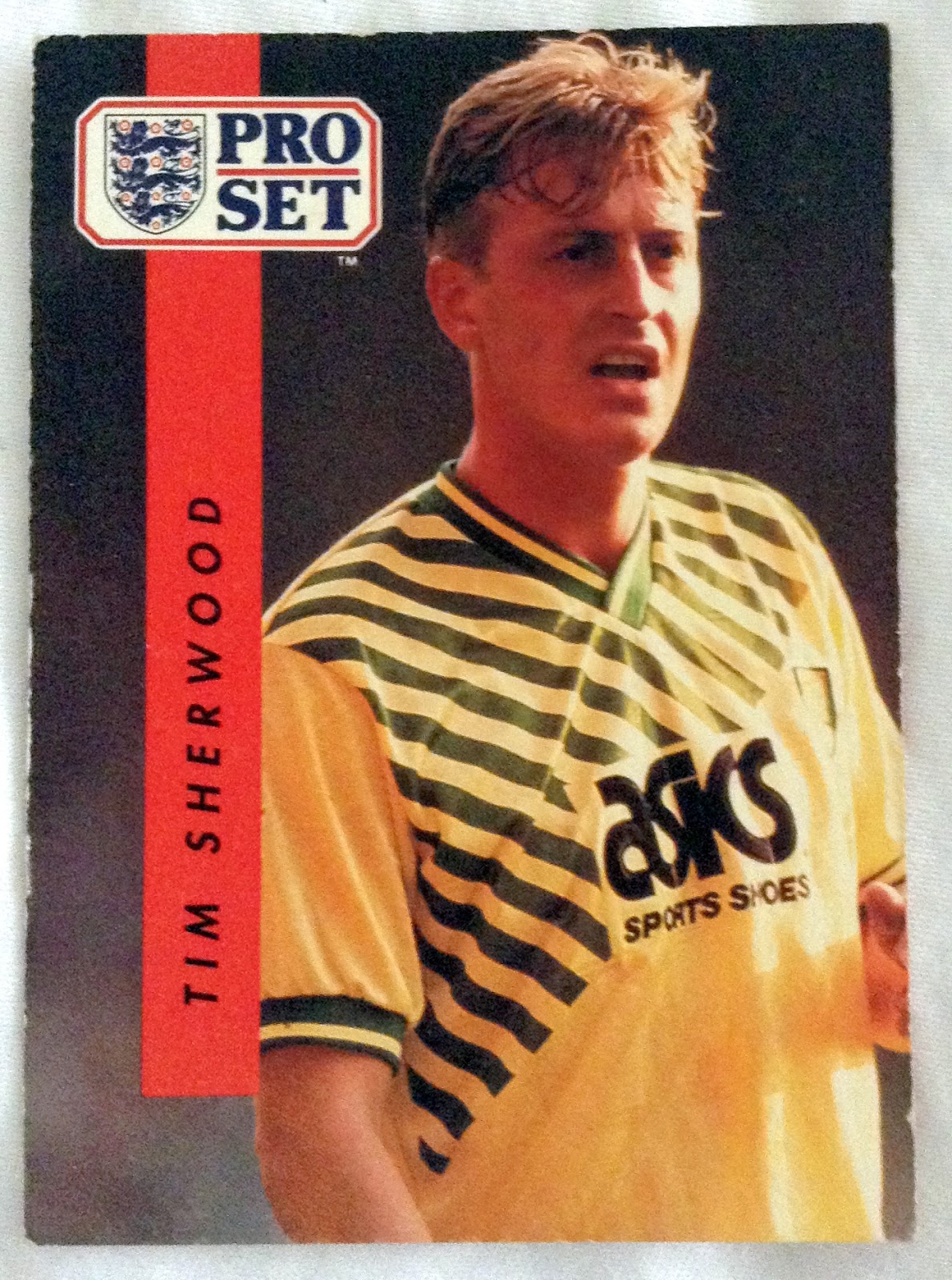The year is 1984. Charlie Nicholas is the poster boy of British football, Bryan Robson and Ray Wilkins share the British transfer record and players everywhere are earning more money than they've ever done. Where would it all end, or more specifically, what would football be like ten years hence in 1994?
That was the question Shoot! magazine asked 29 years ago, and to find the answer, it assessed the state of the British game at ten-year intervals leading up to 1984.
"Stanley Matthews was on £15 a week in the winter and £12 a week in the summer in 1954" said Shoot! as if to reinforce the stereotypical view of post-war austerity in Britain. "Blackpool, then in the First Division, carried a staff of 39 full-time professionals and their weekly wage bill for players was not more than £650... The terrace admission price was 1s 9d (8.40p). Match programmes cost twopence (0.75p)."
It all sounds like chicken feed by today's standards. The biggest British transfer back then was the £30,000 Tottenham paid Aston Villa for Danny Blanchflower, and even that was exceptional given that most players were still going to training sessions either by bus or bicycle because they couldn't afford a car.
Ten years on and Jimmy Greaves was the star of the day, earning £60 a week, while Tottenham had a wage bill of £2,500 for its staff of 35 people. Match day programmes would have set you back one shilling while five shillings would have got you a place on the terraces to see the match. As for the biggest transfer deals, the bar had been raised to £116,000 following Denis Law's move from Manchester United to Torino in 1962.
And so it went on with monetary comparisons made for 1974 and 1984, the year when this Shoot! article was published. All very interesting too, but one has to wonder how all these values equated when inflation was taken into account. What could Stanley Matthews have bought with his weekly wage of £15 and how much is it worth in real terms from a modern-day perspective?
As ever, The Football Attic intended to find out, so what follows is a series of graphs that show the changes in value for each of Shoot's main criteria based on their 2013 worth. Also shown on the graphs are the predictions made by the magazine as to what values they expected to see in 1994 (more of which later), plus the real values for 1994 and the years that followed.
Weekly Wage For a Top Footballer
That was the question Shoot! magazine asked 29 years ago, and to find the answer, it assessed the state of the British game at ten-year intervals leading up to 1984.
"Stanley Matthews was on £15 a week in the winter and £12 a week in the summer in 1954" said Shoot! as if to reinforce the stereotypical view of post-war austerity in Britain. "Blackpool, then in the First Division, carried a staff of 39 full-time professionals and their weekly wage bill for players was not more than £650... The terrace admission price was 1s 9d (8.40p). Match programmes cost twopence (0.75p)."
It all sounds like chicken feed by today's standards. The biggest British transfer back then was the £30,000 Tottenham paid Aston Villa for Danny Blanchflower, and even that was exceptional given that most players were still going to training sessions either by bus or bicycle because they couldn't afford a car.
Ten years on and Jimmy Greaves was the star of the day, earning £60 a week, while Tottenham had a wage bill of £2,500 for its staff of 35 people. Match day programmes would have set you back one shilling while five shillings would have got you a place on the terraces to see the match. As for the biggest transfer deals, the bar had been raised to £116,000 following Denis Law's move from Manchester United to Torino in 1962.
And so it went on with monetary comparisons made for 1974 and 1984, the year when this Shoot! article was published. All very interesting too, but one has to wonder how all these values equated when inflation was taken into account. What could Stanley Matthews have bought with his weekly wage of £15 and how much is it worth in real terms from a modern-day perspective?
As ever, The Football Attic intended to find out, so what follows is a series of graphs that show the changes in value for each of Shoot's main criteria based on their 2013 worth. Also shown on the graphs are the predictions made by the magazine as to what values they expected to see in 1994 (more of which later), plus the real values for 1994 and the years that followed.
Weekly Wage For a Top Footballer
| Image may be NSFW. Clik here to view.  |
| Click for larger view |
Having heard that Stanley Matthews earned £5 per week during 1954 and Jimmy Greaves earned £60 per week in 1964, Shoot! went on to explain that West Ham's Bobby Moore picked up the equivalent of around £230 per week during 1974 - the equivalent of £2,038 per week in today's money. "He drove a Jaguar and his wife had a sports car and they lived in luxury in a magnificent house called Morelands," Shoot! went on to say.
As for Charlie Nicholas, he was raking in £2,400 per week in 1984 while at Arsenal - over £6,500 per week by today's standards. "If football earnings continue to increase at the same rate as in the last 20 years" said Shoot back then, "a top First Division star in ten years time can look forward to netting around £30,000 a week!" As it is, that figure turned out to be nearer £10,000 per week in 1994, but that was nothing compared to the £50,000 per week that Javier Hernandez was earning at Manchester United in 2012. Using the Mexican as a randomly chosen top player of the era, his weekly earnings were far greater than even Shoot! could have predicted.
Top-flight Football Match Ticket
| Image may be NSFW. Clik here to view.  |
| Click for larger view |
Paying one shilling and ninepence for a ticket to see Stanley Matthews in 1954 was the equivalent of paying just over £2 in today's money - a bargain whichever way you look at it. A decade later you'd have been paying double that, and in 1974 you'd have been paying the equivalent of £6.62. Curiously the real cost of a ticket for Highbury in 1984 was slightly less than the 1974 equivalent.
In 1984, Shoot! magazine was predicting that a ticket for a match in 1994 would cost as much as £25 - that's £68 in current terms. This turned out to be a big over-estimate as the real value was just under half-that, but it's true that ticket prices have continued to rise dramatically. The cheapest ticket for a match at White Hart Lane this season currently stands at £37.
Match-day programme
| Image may be NSFW. Clik here to view.  |
| Click for larger view |
It can be argued that today's match-day programmes offer much more content and higher production values than the offerings of 1954. Even so, the tuppence you'd have paid for one back then - 15p in today's money - still seems paltry.
The cost of a programme was up considerably come 1964, although the cost remained relatively constant right up to 1984 when it was worth just over £1 in 2013 terms. That, however, didn't stop Shoot! predicting that in 1994 "match programmes will cost £5." You'd have actually paid around £1.50 back in 1994 (£2.53 today), whereas a guide to the match at Stamford Bridge in 2013 will still only set you back £3.
Highest British Transfer Fee Involving a British Player
| Image may be NSFW. Clik here to view.  |
| Click for larger view |
You hardly need us to provide a graph to tell you how much transfer fees have sky-rocketed over the last few years. Gareth Bale's £88.5 million transfer from Tottenham to Real Madrid in 2013 dwarfs any previous transfer involving a British player, even taking inflation into account.
Just for once, Shoot! was almost spot on with its prediction that in 1994 the record transfer fee would be £5 million. In 1992, Paul Gascoigne moved from Tottenham to Lazio for £5.5 million - the equivalent of £9.6 million in today's money. Ten years further on, Rio Ferdinand's move from Leeds to Manchester United resulted in £29.1 million changing hands (2013: £40.1 million).
Shoot! Magazine
| Image may be NSFW. Clik here to view.  |
| Click for larger view |
Looking ahead ten years on from 1984, Shoot! predicted that it would cost £3 in 1994 "and it would continue to be the best read in football." Modesty aside, the magazine actually costed 70p in 1994 (£1.18 by today's values) and was still only £1.80 when its final issue was published in 2008 (2013: £2.03).
Shoot! cost just one shilling when it was launched in 1969 and its value in modern terms barely changed over the next 15 years, costing 8p in 1974 and 33p in 1984.
Poking fun at the past
If you're not now reeling from the statistical tidal wave that's just hit you, we end with a little light relief.
As anyone that used to watch Tomorrow's World will tell you, long-range forecasts can sometimes prove hilarious with hindsight. Such is the case as we look at Shoot! magazine's predictions for what football would be like in 1994.
"We at Shoot have been looking into our crystal ball and forecast that in 1994 there will be a British Super League with Celtic, Rangers and Aberdeen joining nine elite clubs from England." So far, so wide of the mark. "Liverpool, Manchester United, Arsenal and Spurs are the English clubs likely to lead the revolution, with many of the smaller clubs either going to the wall or surviving with staffs of part-time professionals." Now we're getting somewhere...
"Synthetic pitches - with the infamous bounce controlled - will be commonplace," it proclaimed, "...and most major clubs will carry a sponsors name in their title, for instance GUINNESS RANGERS at Shepherd's Bush [QPR]." If only - the thought of seeing CARDIFF MALAYSIA would surely have been a sight to see...
It continued: "Matches will be played on summer Sunday evenings, and there will be one televised match every Saturday... There will be no standing on the terraces at British Super League matches because the grounds will be all-seaters." A virtual bullseye there, although Shoot! may not have predicted the reason for the changes in the first place.
With a final glimpse to the future, we see the illustration of two players on what we assume is a synthetic football pitch wearing sponsored shirts, elbow pads and full length gridiron-style pants instead of shorts. Though most of Shoot's predictions turned out to be hopelessly wrong, we're glad to see that this one wasn't any different.
(Inflation calculations courtesy of This Is Money)














































































